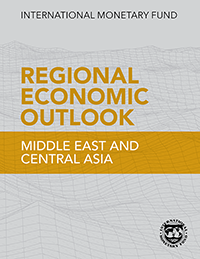Imf Economic Outlook Latin America
america outlook wallpaperLatin America and the Caribbean have become the new COVID-19 global epicenter. Regional Economic Outlook Data Tools IMF Data Portal.
 Why Americans Are So Much More Optimistic Than Other Rich Countries Rich Country America Optimistic
Why Americans Are So Much More Optimistic Than Other Rich Countries Rich Country America Optimistic
Peru is expected to achieve among the strongest rebounds in the region.

Imf economic outlook latin america. Outlook for Latin America and the Caribbean. The IMF forecasts that Latin Americas economy will grow 41 percent in 2021 an upwards revision from the 36 percent it predicted last October but also reiterates that unless there is a. The COVID-19 pandemic is inflicting high and rising human costs worldwide and the necessary protection measures are severely impacting economic activity.
The most recent IMF projections forecast GDP across Latin America and the Caribbean to grow by 41 in 2021 and 29 in 2022. Economic activity in Latin America and the Caribbean remains sluggish. Real GDP is expected to grow by 06 percent in 2019the slowest rate since 2016before rising to 23 percent in 2020.
Outlook for Latin America and the Caribbean. IMF lending to bolster COVID-ravaged economies has gone to 21 countries in the region where the pandemics impact has been magnified by natural disasters. World Economic Outlook April 2020.
Many countries in Latin America and the Caribbean still have fiscal space for further stimulus to power an economic recovery in the region according to Alejandro Werner at an event on Latin Americas 2021 Economic OutlookIn a discussion with ASCOA President and CEO Susan Segal the International Monetary Funds director of the Western Hemisphere Department detailed his organizations. The Great Lockdown April 6 2020 Description. After a deep contraction in April activity started recovering in May as lockdowns were gradually eased consumers and firms adapted to social distancing some countries introduced sizable policy support and global activity strengthened.
The economic toll has also been steep. Regional Economic Outlook Update for Latin America and the Caribbean Press Conference. Economic activity in Latin America and the Caribbean stagnated in 2019 continuing with the weak growth momentum of the previous five years and adding more urgency and new challenges to reignite growth.
The economic impact of the COVID-19 pandemic is being felt around the world and Latin America is no exception. But first the nations in the region have to seize firm control of the pandemic and thats unlikely to happen in a hurry. Portuguese - Regional Economic Outlook Update for Latin America and the Caribbean Press Conference Language.
Latin America and the Caribbean will have a slow and rough economic recovery from the COVID-19 pandemic according to the International Monetary Fund IMF. WASHINGTON Reuters - The International Monetary Fund on Thursday said the economic fallout of the coronavirus pandemic combined with other problems in recent years meant Latin America and the. External factors remain a headwind to economic prospects in the region led by sluggish global growth subdued commodity prices and volatile capital flows although easier global financial conditions provide some respite.
The pandemic continues to spread in Latin America and the Caribbean LAC but economic activity is picking up. Tighter financial conditions and volatile commodity markets economic recovery in Latin America and the Caribbean LAC has both moderated and become more uneven. Economic activity in Latin America and the Caribbean remains sluggish.
Pandemic Persistence Clouds the Recovery. IMF Data Mapper v3 Plot compare and import data. Log into your account.
The IMF has been supporting Latin America and the Caribbean with policy advice technical assistance and financing providing over 66 billion to 21 countries including contingency lines. We want to hear from you. Alejandro Werner Director of Western Hemisphere Department IMF.
Alejandro Werner Director of Western Hemisphere Department IMF. And we stand ready to do more. Outlook for Latin America and the Caribbean.
This amounts to over two thirds of the emergency liquidity support the IMF extended globally. The human cost has been tragic with over 100000 lives lost. The recovery has slowed in some of the regions largest economies.
Indeed real GDP per capita in the region has declined by 06 percent per year on average during 20142019a sharp contrast from the commodity booms average increase of two percent per year during 20002013. Growth in Latin America and the Caribbean LAC has slowed from 10 percent in 2018 to 02 percent in 2019 but a tentative pick-up to 18 percent is expected in 2020. Real GDP is expected to grow by 06 percent in 2019the slowest rate since 2016before rising to 23 percent in 2020.
52 Views Regional Economic Outlook Update for Latin America and the Caribbean Press Conference SPEAKERS. As a result of the pandemic the global economy is projected to contract sharply by 3 percent in 2020 much worse than during the 200809 financial crisis.







